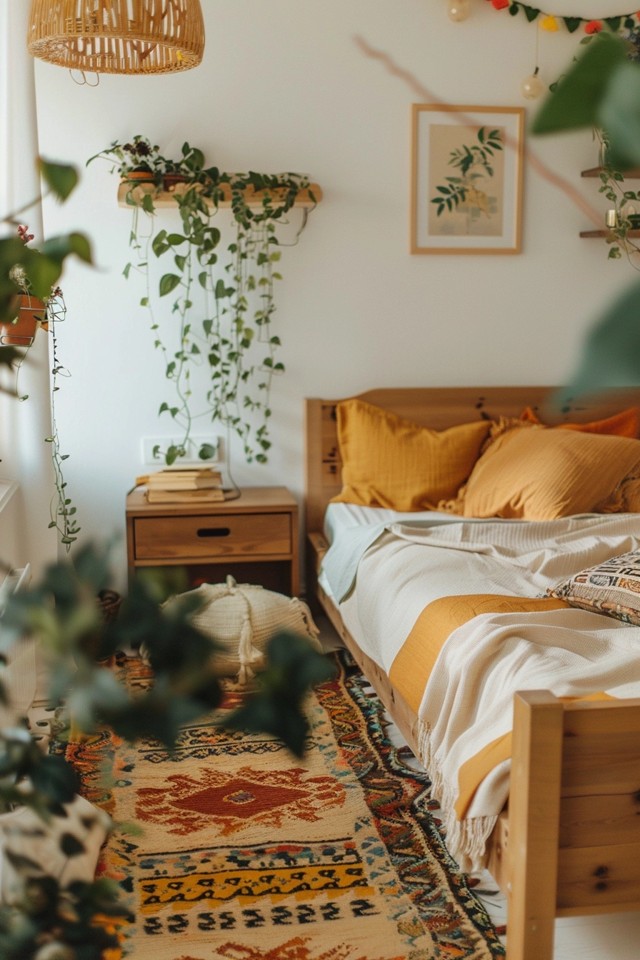Sharing a small bedroom with a child doesn’t mean everything has to be childish. As a parent sharing a room with your child, you have the opportunity to create a space that is both functional and stylish. Whether you’re co-sleeping or simply sharing a room due to space constraints, there are plenty of creative ideas to optimize your family bedroom for comfort and create a cozy atmosphere that meets everyone’s needs.
When it comes to designing a shared room, it’s important to consider the different ages and needs of your children. By implementing the right strategies, you can ensure that everyone has their own space while still fostering a sense of togetherness. From arranging the sleeping areas according to age to incorporating individual touches, there are ways to create a harmonious environment that caters to each child’s unique preferences.
Bedtime disruptions can be a challenge in a shared parent-child room. If your children are keeping each other awake or experiencing sleep problems, there are solutions to consider. By organizing the limited space effectively and investing in dual-purpose furniture, you can maximize the functionality of the room while maintaining a peaceful sleep environment for everyone.
Key Takeaways:
- Optimize your family bedroom with creative tips for parents sharing a room with their child.
- Design a shared room for different ages by considering individual needs and incorporating personal touches.
- Address bedtime disruptions in a shared parent-child room with effective organization and dual-purpose furniture.
- Create a cozy and functional space that meets everyone’s needs.
- Foster a sense of togetherness while ensuring each child has their own space.
Designing a Shared Room for Different Ages
When your kids are of different ages, designing a shared room can be a challenge. However, with the right strategies, everyone can get what they need out of a shared bedroom. From putting the youngest child closest to the door to incorporating vintage decor, there are ways to create separate spaces and accommodate different sleep patterns.
One effective solution for shared space parenting is to divide the room into distinct areas for each child. This can be achieved by using bookshelves or curtains as dividers, giving each child his or her own private space within the room. By designating zones for sleeping, playing, and studying, you can create a sense of individuality and maximize the use of available space.
Another sibling room sharing strategy is to consider the needs and interests of each child when choosing decor. For example, if one child loves superheroes while the other enjoys princesses, you can incorporate elements of both themes in the room design. This will make the room feel personalized and appealing to each child.
Maximizing Space with a Shared Bedroom
When it comes to maximizing space in a shared bedroom, smart storage solutions are key. Consider using bunk beds with built-in drawers or shelves to save space and keep belongings organized. Additionally, utilizing vertical storage options such as wall-mounted shelves or hanging organizers can help free up valuable floor space.
Lastly, don’t forget to involve your children in the planning process. Allow them to express their preferences and contribute ideas for the room design. This will not only make them feel involved but also ensure that the shared bedroom reflects their individual personalities.

“Designing a shared room for different ages can be a fun and rewarding experience. It allows siblings to bond and create lasting memories together.”
By implementing shared space parenting solutions and sibling room sharing strategies, you can create a harmonious and functional shared bedroom for your children. Remember, with a little creativity and thoughtful planning, a shared room can become a special place where siblings can grow, learn, and thrive together.
Bedtime Disruptions and Solutions
Bedtime disruptions can be a common challenge when siblings share a small bedroom. As a parent, it can be frustrating when your children keep each other awake or experience sleep problems. However, there are practical and stylish solutions to consider that can help maximize space and maintain a peaceful sleep environment for everyone.
One option is to utilize bunk beds with built-in storage. These beds not only provide a comfortable sleeping space for both children but also offer additional storage solutions to keep their belongings organized. With designated spaces for toys, books, and clothes, you can create a clutter-free and functional bedroom for your family.
Another solution to consider is the use of dual-purpose furniture. In a shared parent-child room, incorporating furniture that serves multiple functions can help optimize the limited space. For example, you can choose a daybed or a sofa bed that can be transformed into a sleeping area for your child at night. This way, you can provide a separate sleeping space while still having a cozy seating area during the day.

Finally, if privacy is a concern, room dividers can be a great addition to a shared bedroom. These dividers create distinct zones, giving each child a sense of personal space and privacy. Whether it’s a decorative curtain, a bookshelf, or a folding screen, there are various options available that not only provide privacy but can also add a stylish touch to the room.
By implementing these small bedroom organization ideas and using dual-purpose furniture, you can create a harmonious sleep environment for your children. Remember, a well-organized space with functional solutions will not only promote better sleep but also ensure a peaceful bedtime routine for the whole family.

